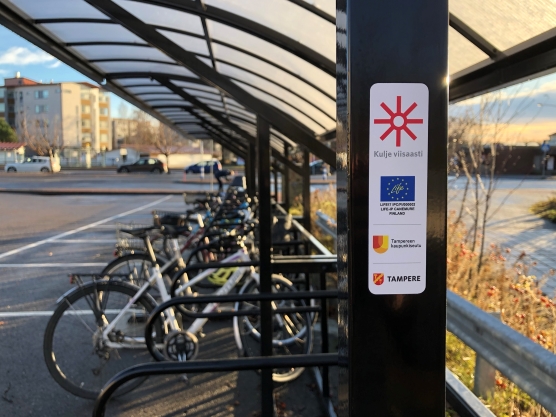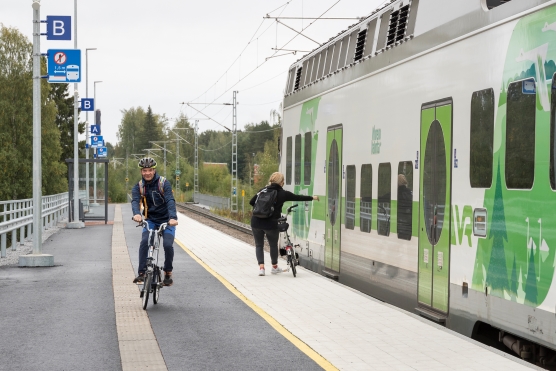The objective of the Canemure sub-project “Connecting to the Public Transport Trunk Network” in Tampere city region is to create sustainable mobility and smooth travel chains. Particular attention is paid to commuting, as it accounts for a large part of the region's climate emissions from transport.
The aim is also to attract people to use public transport even if it does not transport them directly from door to door. In that case, quick connections and attractive travel chains play a key role.
The backbone of public transport strengthened by the new commuter train
The sub-project was launched in 2018, when regional commuter train traffic was only a goal on paper and there was no certainty that it would be realised. However, the commuter train traffic took a big step forward in 2020–2021, when 14 new trains started operating between Tampere and Nokia in late 2020 and the Tesoma stopping point was opened on the route in autumn 2021.
The Tesoma stopping point brought a very important additional vertebra to the regional public transport backbone: the journey from Tesoma to the centre of Tampere takes about ten minutes by train, and the commuter train enables smooth transfer to long-distance trains.
The new commuter train connections in Tampere region have improved the opportunities for sustainable mobility while also increasing its marketing opportunities.
“The commuter train traffic offered many opportunities for action. Nokia, for example, improved access parking for both bikes and cars. Marketing the Tesoma stopping point was also important in raising awareness of the new opportunities among the residents,” says Sanna Ovaska, project manager for the subproject. “The impact comes from improving conditions and services. In addition, marketing is needed to spread awareness among people.”

Bicycle parking was improved at Nokia station. © Laura Niittymäki.
Commuter train service made it possible to experiment with folding bikes
The sub-project promotes sustainable mobility through various means of which bike experimentation plays an important role.
“We organised a bike experiment that has almost become a trademark for our sub-project, but this time the experiment was aimed at potential train passengers,” says Ovaska. In autumn 2020, the Nokia pilot project experimented with the use of electric bikes for commuting between Nokia and Tampere, but after the Tesoma stopping point was opened, the project switched to folding bikes. The purpose of the experiment is to change the modes of transport of the test group.

The folding bike enables smooth cycling at both ends of the train journey. © Marjo Aspegren.
COVID-19 brings opportunities, too
The COVID-19 pandemic complicated regional mobility and the operating environment of the project quite thoroughly. When the exceptional circumstances came into effect, the number of passengers in public transport collapsed after commuters switched to remote work. The few people who went to work mostly moved by car, as driving was considered the safest way to travel. However, COVID-19 does not solve the development of transport emissions, even though commuting is declining.
Despite COVID-19, the commuter train was received positively. In particular, commuter traffic between Nokia and Tampere increased significantly in early 2020, as the number of passengers grew by more than 45% compared to the previous year.
“COVID-19 also contributed to the acceleration in the sale of electric bicycles and increase in the popularity of leisure cycling. Many people gave up their parking spot at their workplace. Now it is important to restore confidence in public transport and take advantage of the cycling boom that has begun,” says Ovaska.
Learn more
Further information
- Project Manager Sanna Ovaska, sanna.ovaska@tampere.fi